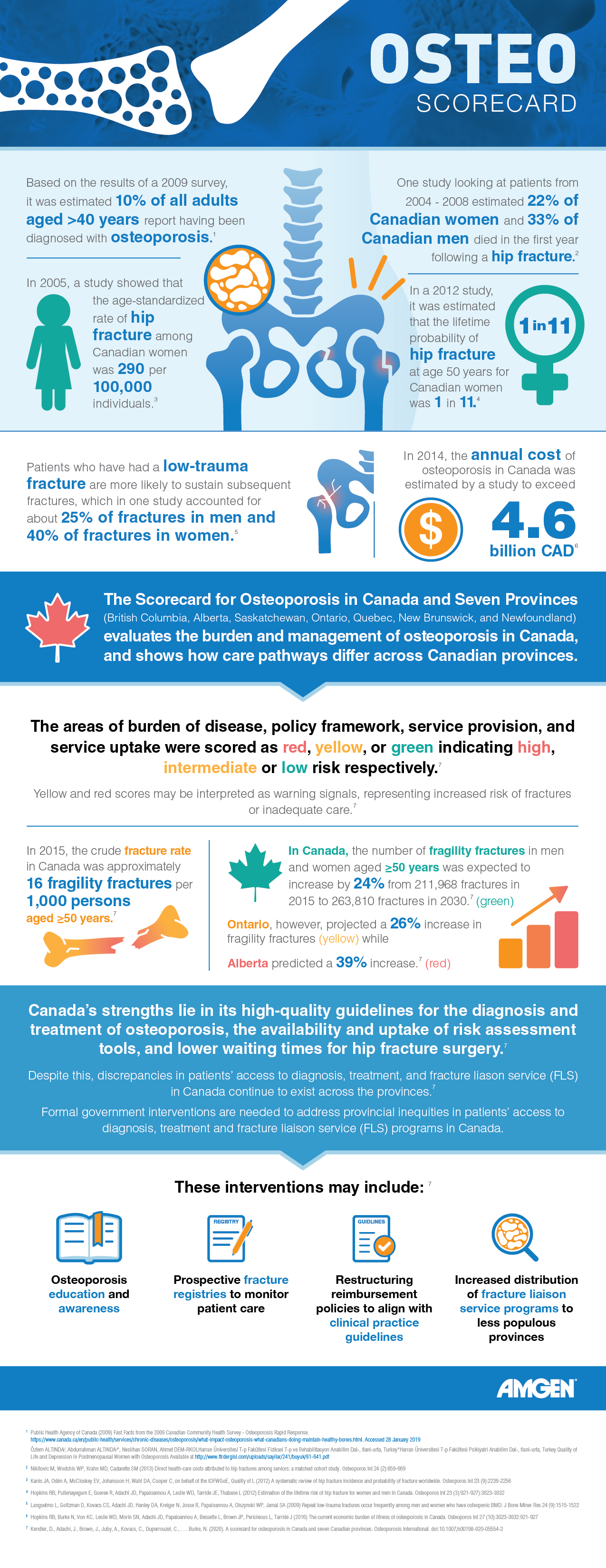Osteoporosis affects approximately 1.4 million Canadians including an estimated 1 in 4 women and more than 1 in 8 men over the age of 50. However, according to A Scorecard for Osteoporosis in Canada and Seven Canadian Provinces, a recent study evaluating the burden and management of osteoporosis in Canada, there are significant provincial differences in the diagnosis, treatment, and care of osteoporosis across the country. Note: Although the researchers sought to include all 13 provinces/territories, they ended up selecting seven provinces based on availability of experts who were interviewed as part of the study framework.
About A Scorecard for Osteoporosis in Canada and Seven Canadian Provinces
The Canadian Scorecard was adapted from the Scorecard for Osteoporosis in Europe (SCOPE), an extensive analysis conducted for the 27 countries of the European Union (EU) in the 2013.
In addition to a national-level analysis, the framework was expanded to seven Canadian provinces (British Columbia, Alberta, Saskatchewan, Ontario, Quebec, New Brunswick, and Newfoundland) in order to identify regional variations in osteoporosis care. This was important because, although Canada has a universal publicly funded healthcare system, the delivery of healthcare is primarily the responsibility of the provinces and territories.
Evaluating Canada’s Performance
Twenty elements related to osteoporosis management were scored across four areas: burden of disease, policy framework, service provision, and service uptake. While Canada performed well on several elements of osteoporosis care, including high uptake of risk assessment algorithms and minimal wait times for hip fracture surgery, there are currently no established fracture registries in the country, and reporting on individuals with high fracture risk who remain untreated was limited. Furthermore, osteoporosis is not an official health priority in most provinces
Making Osteoporosis a National Priority.
According to the study authors, interventions are needed to address provincial inequities in patients’ access to diagnosis, treatment, and fracture liaison service (FLS) programs in Canada. Specifically, they suggest Canada and its provinces would benefit from the creation of formal government action plans to support osteoporosis education and awareness; to establish fracture registries to monitor patient care; restructure reimbursement policies to align with clinical practice guidelines; and increase the distribution of fracture liaison service programs to less populous provinces.
Together, the study argues, we can help ensure the diagnosis, treatment and care of osteoporosis becomes a national priority and better support those Canadians living with the condition.
The infographic below offers additional detail about the Scorecard’s findings.






